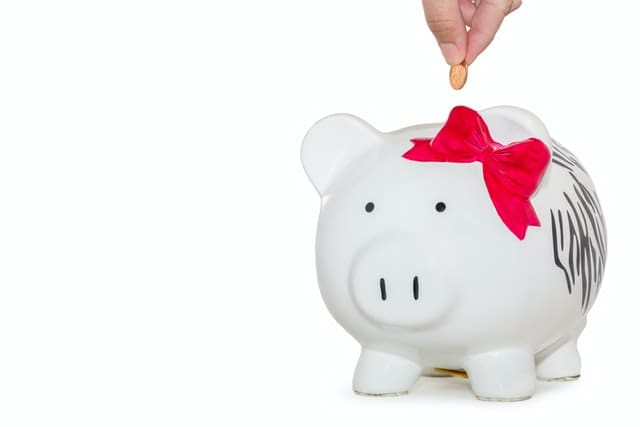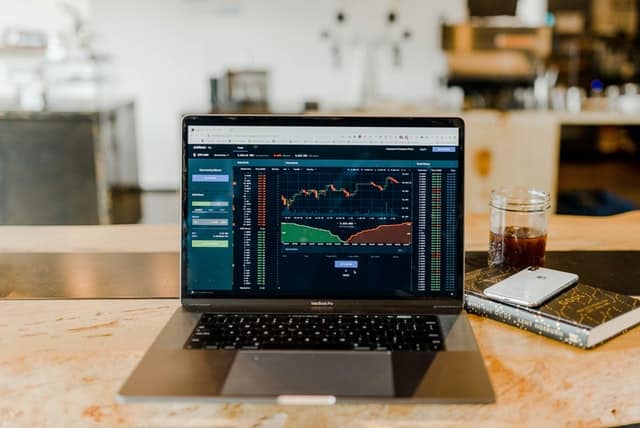Relationship between risk and return when investing
Risk and return are always linked when investing: the higher the risk, the greater the (potential) return. But how quickly does the risk increase and to what level do you dare to go? In this article, you will discover how risky investing is.
What is the return?
The meaning of return is simple. The return on an investment is the result that you achieve in proportion to its value. When you buy a share for $10 and you achieve $1 in return because the price increases, your return is 1%.
What are investment risks?
Investment risks are all things that can cause the value of your investment to plummet. Not all investment products have the same risk. In this article, you will discover the relationship between risk & return.
What is the relationship between risk and return?
Without risk, you will not achieve a (good) return. When you put money in the bank, you always lose. The low interest does not outweigh the inflation. Over time this means that your capital decreases in value.
Saving your money on a bank does not make you rich. Saving does have the advantage of being practically risk-free. The chance that a bank will fail is quite small, even in times of crisis. And when this does eventually happen, many governments will step up and ensure that you won’t lose your deposit. If you want to obtain a better return, you should look into investment opportunities.
As an investor, you are paid to take risks. People don’t just invest their hard-earned money: they expect something in return. In this article, we look at the relationship between risk and return for the most popular investment products. You can directly navigate to a specific type of investment to learn more:
- Time deposit: you receive a fixed amount of monthly interest
- Bonds: you lend money to a company or government
- Shares: you trade in the price development of shares
- Real estate: you can for example buy a second home
- Derivatives: the most risky option with potential high rewards
Is a time deposit a good choice?
If you want to achieve a higher return without significant risks, it is wise to open a time deposit. With a savings account alone, you only receive a very low-interest rate. With a time deposit, you receive a higher interest rate over your savings. A disadvantage of a time deposit, is that you will not be able to access your funds for a certain period. It is therefore wise to determine for which period you do not need the money.
A good party where you can open a deposit is Raisin. With this party, you can directly compare the different available time deposits. For every deposit you can verify under which conditions your savings are guaranteed. Use the button below to directly visit the website & explore the possibilities:

How risky are bonds?
If you want to achieve a higher return without too high risks, bonds might be something for you. With bonds, you lend money to a company or government. After you buy a bond you periodically receive an interest payment. At the end of the term you receive back the amount you invested initially.
The only real risk of a bond is the possibility of the company (or even the government) going bankrupt. In that case, you will most likely lose at least part of your investment. By paying close attention to the creditworthiness of the party behind the bond, you can avoid losing your investment.
Of course, your investment result can also be less favourable. This happens when the market interest rate rises. You will then receive a lower return on the bond you own in relation to the bond you can buy now. Your interest payments are certain, where it is not guaranteed that you will still be happy with these payments in the future. Would you like to know more about investing in bonds? In our course about investing in bonds you can find all the information you need:
You can achieve a high return with shares. By buying and selling shares at the right time, you can earn a lot of money by day trading. You can also invest in shares for a long-term strategy. By structurally reinvesting the dividend, you can build up large capital in the longer term.
This higher (potential) return comes with risks. The prices of shares move faster than the prices of bonds. If you are unlucky, the price of the share you bought can drop sharply. You also have to keep in mind that the dividend payments are not a certainty. When you buy bonds, you do receive a fixed payment. When you consider buying shares for the long term, it is therefore wise to first apply an extensive analysis to avoid disappointment.
There are many differences between the potential return & risk of different stocks. Some stocks move very stably and are considered relatively save. Other shares have a more speculative character and their price developments are more dependent on future growth. There is a chance that the shares of riskier companies become worthless at some point. The potential return with share investments increases, when you take higher risks.
Do you want to learn the best methods you can use to buy shares? In our article about investing shares, you learn everything you need to know:

What about the risk of real estate?
More and more people discover the appeal of investing in real estate. With an investment in real estate, you can earn money in two ways. When you own a property, you can collect rental income. Besides that, the value of your real estate might increase over time. Since you immediately receive an income through rental income, the risk of real estate is a bit lower. It is possible to sell real estate at any moment.
Yet, investing in real estate is by no means completely without risk. You often need a lot of capital to purchase a second house. Because of this, you often pay financing costs over the loan you need. In the long term, you also have to repay this debt. When the value of the property drops significantly, you can even achieve a significant loss.
Do you want to know how you can invest in real estate sensibly? Are you curious how you can achieve a good balance between risk and return? Read our extensive ‘investing in real estate’ manual and learn all the secrets:
Options & other derivatives
Finally, you can also actively trade options and derivatives. With both, you can achieve enormous returns (sometimes hundreds of percentages on one investment). However, derivatives also involve higher risks.
This is because you often use leverage with derivatives. When a stock rises a few percent in value, you can quickly gain or lose tens of percent. Investing in derivatives is therefore only for investors with nerves of steel.
Investing by using derivatives can be very profitable. Given the high risks, it is however advisable to spread your investments over different type of investment products. Do you want to discover whether trading in derivatives is suitable for you? Then open a free demo account with a broker and try the possibilities without risk:
What is a risk profile?
When you invest in a fund, you often have to select a risk profile. These profiles are often divided in several categories: very defensive, defensive, neutral, offensive, and very offensive.
With a defensive profile, your money is mainly invested in investment products with a relatively low risk. An example of a low-risk investment product is a bond. Offensive profiles invest more in risky stocks.
With a more offensive profile, you often achieve a higher return in the long term. However, you can also expect greater losses in the short term. Therefore, only invest in an offensive profile if you have a long investment horizon. If you have time, you can wait for a recovery when the markets crash.
Does the best investor achieve the highest return?
This certainly does not have to be the case. You can also win the lottery by gambling. However, this does not make you a skilled investor. It is important to always invest according to a good plan.
When you can choose between a 10% chance of an 82% return and a 90% chance of a -20% return or a 90% chance of a 12% return and a 10% chance of a -4% return then the second scenario a lot more stable.
It is therefore important to also take the volatility of your investments into account. A good investment portfolio does not continuously make huge jumps down and up. Most people prefer to achieve a stable, predictable return.
 How do you want your return to grow?
How do you want your return to grow?
How can you reduce the risk?
You know after reading this article that there is a clear link between risk and return. You can reduce the risk by managing your investments in a smart way. It is especially important to diversify your investments over different products. When you invest in different investment products and regions, you reduce the chance that you will lose a substantial amount due to one bad investment.
Besides this, it is of course also advisable to do enough research. It does not matter whether you invest yourself or through an advisor. Even when you use an advisor, it is wise to track what happens with your money.
Auteur

Over Alex Mostert
When I was 16, I secretly bought my first stock. Since that ‘proud moment’ I have been managing trading.info for over 10 years. It is my goal to educate people about financial freedom. After my studies business administration and psychology, I decided to put all my time in developing this website. Since I love to travel, I work from all over the world. Click here to read more about trading.info! Don’t hesitate to leave a comment under this article.
